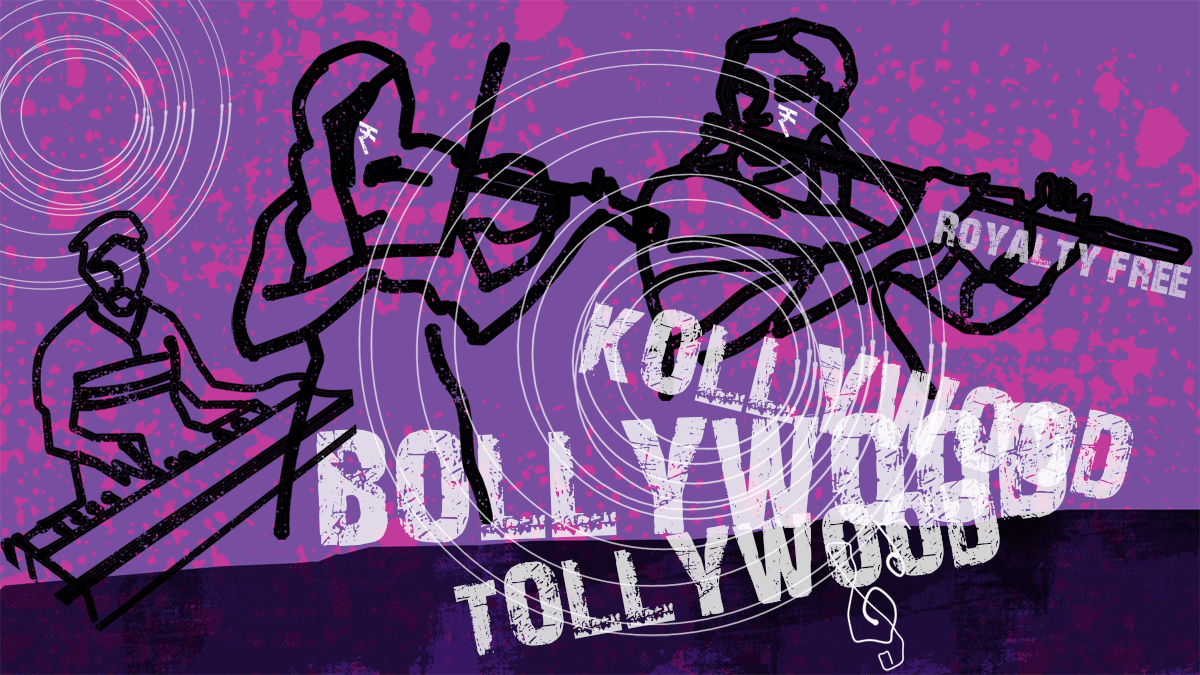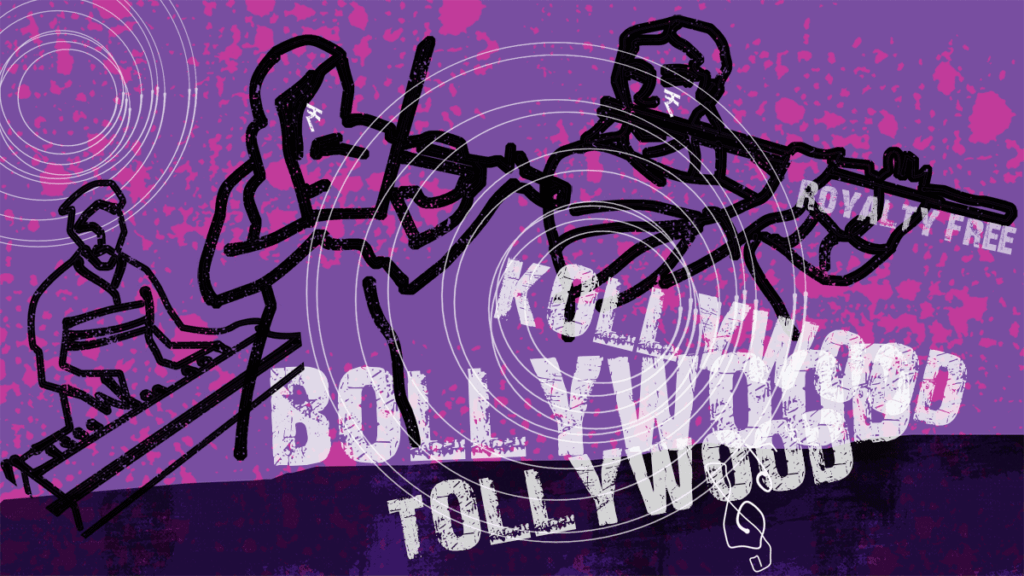‘Session musicians, background singers, and studio instrumentalists fill out the sound of India’s biggest hits.’
‘But their names rarely show up on screen.’
‘Their royalties never arrive.’
‘And their contribution, no matter how iconic, vanishes once the track is mastered.’

Illustration: Dominic Xavier/Rediff
Every hit song has a hidden side.
Behind the shimmering vocals, viral melodies, and expertly produced beats are dozens of hands that brought it to life — the violinist who added an aching swell, the flautist whose solo became the song’s signature, the percussionist whose rhythm tied it all together.
They are the session musicians, background singers, and studio instrumentalists who fill out the sound of India’s biggest hits.
But their names rarely show up on screen.
Their royalties never arrive.
And their contribution, no matter how iconic, vanishes once the track is mastered.
India’s music industry has never been louder. Streaming platforms have turned chart-toppers into overnight sensations, regional voices into global exports, and bedroom producers into brand names.
The Indian Performing Right Society (IPRS) disbursed over Rs 600 crore (Rs 60 billion) in royalties in 2024-2025 alone, much of it driven by digital plays.
But behind this digital boom lies a stubborn analogue problem: non-featured artistes — session musicians, backing vocalists, instrumentalists — remain locked out of the royalty system that their work fuels.
The shift from cassettes to clicks has transformed India’s music economy. The IPRS now reports that nearly 70 per cent of its royalty collections come from streaming. Independent and regional artistes are flourishing; some earn over Rs 50 lakh (Rs 5 million) annually.
Yet, as lyricist, screenwriter, and National Award-winning songwriter Varun Grover (known for films like Masaan, Dum Laga Ke Haisha, Gangs of Wasseypur and the Netflix series Sacred Games), puts it, “Session musicians deserve way more than what they are getting.”
These non-featured artistes typically work on a one-time session basis. They show up, perform, and leave. Their names rarely appear in streaming metadata. Their contracts, if they exist at all, often cede all future rights. Their artistry, stitched into the DNA of a song, is monetised endlessly by others.
Independent composer Joell Mukherji, who has collaborated with Amit Trivedi and Pritam, composed over 150 ad films, and created the viral song Credit De Do Yaar, confirms the problem runs deep.
“The concept of royalty distribution is still in a very nascent stage in India… Even FM stations do the same,” he says.
Veteran violinist Jeetendra Javda, whose bow has swept across decades of Bollywood, echoes this, pointing to a complete lack of paperwork: “The typical work which we do here does not have any discussed contract… It is like the hours we work for them or the instrument we like.”
“We don’t even have proper documentation of who played what,” adds Madhav Ajgaonkar (Maddy), a seasoned music composer.
“Forget money. Even credits are missing.”
India’s Copyright (Amendment) Act, 2012, was heralded as a landmark reform. But the law’s benefits have largely bypassed non-featured performers.
Though performers are recognised in theory, few musicians are registered with collective management organisations, and fewer still negotiate royalty-bearing contracts.
Grover recalls being coerced into contracts where labels disguised royalties as advance fees.
“They would say, ‘Here’s Rs 10 lakh for your song… Rs 9 lakh is advance royalty for 50 years.’ They’d even add wild clauses about ‘perpetuity across all galaxies’…”
The systemic inequality stems from the deep-rooted practice of work-for-hire agreements under Section 17 of the Copyright Act.
Javda admits most of his work is based on “mutual understanding” — a handshake deal, with no formal contract, no enforceability. Maddy underlines this rot.
“Even in the 1960s and 70s, we don’t know who played what. Musicians were just tools… R D Burman may be the only one who gave his session artistes visibility.”
Across Europe, non-featured performers enjoy legal mandates for equitable remuneration. Collective societies in Germany, France, and Spain facilitate this distribution. But implementation isn’t seamless.
“Unless you’re formally registered and actively claiming rights, even European systems tilt towards power players,” says Grover.
The difference? In Europe, there are enforceable mechanisms. In India, it’s mostly goodwill, inertia, or luck.
Some changes, however small, are underway.
Javda notes a five-year trend of composers crediting musicians more consistently.
Grover himself released the soundtrack of his film All India Rank on his own YouTube channel, carefully crediting every instrumentalist.
But credit alone doesn’t pay bills. Maddy points to a deeper injustice. “They don’t even know what investing means.”
Industry insiders agree that reform must begin with enforceable contracts and awareness.
“Even when contracts exist, they aren’t notarised,” says Maddy. “Anyone can deny they signed it.”
The Indian Singers’ and Musicians’ Rights Association and IPRS have set precedents for featured artistes. A similar push is needed for session musicians.
“Start with credit,” Maddy says. “Then fight for the money.”
As Javda puts it, “In 1992, none of us even dreamed of royalties. In 2025, at least we’re talking. Maybe in 10 more years, we’ll be counted.”
For now, the soundtrack of India’s digital music boom carries with it an echo — of violins played in silence, flutes forgotten in metadata, and lives that sang so others could shine.


